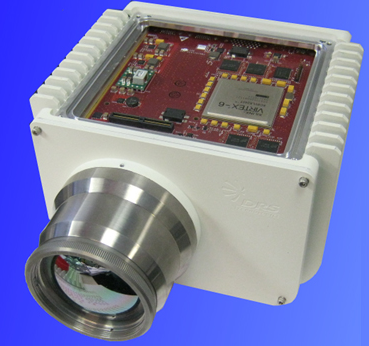To detect other people at night, the military uses long-wave infrared (LWIR) cameras as thermal imagers. Because they're too expensive for individual deployment and too large to be carried by a single warfighter, these cameras are usually mounted on vehicles. Recently, researchers at the Defense Advanced Research Projects Agency (DARPA) demonstrated a new five-micron pixel LWIR camera that could make this type of camera both smaller and less expensive.

LWIR camera. Image via darpa.mil.
Performers at DRS Technologies, Inc. are working on the DARPA Advanced Wide FOV Architectures for Image Reconstruction and Exploitation (AWARE) program. They've demonstrated the first LWIR camera that uses pixels only five microns across, making it the first LWIR camera that uses pixels that are about half the size of the photons it detects. Each pixel is about one-sixth the area of current state-of-the-art, or close to one twelfth the size of a human hair. The pixels are configured in a 1280×720 focal plane array (FPA), which is a high resolution for an IR camera.
Smaller pixels result in smaller optical components and packaging, similar to what may be found on a cell phone. It's easier to capture the photons with a higher density of pixels, making it simpler to spot a target.
The new LWIR cameras are most likely less expensive than current sensors because with FPAs, the cost is proportional to chip area. FPAs are processed on a given wafer size, so the more FPAs printed on a single wafer, the lower the cost will be.
The overall result of this change is a smaller, lighter, and more portable LWIR camera. DARPA hopes that the advantages of smaller pixel FPAs, with appropriate optical adjustments, will become one of the next generation applications.
Story via DARPA.
Advertisement





